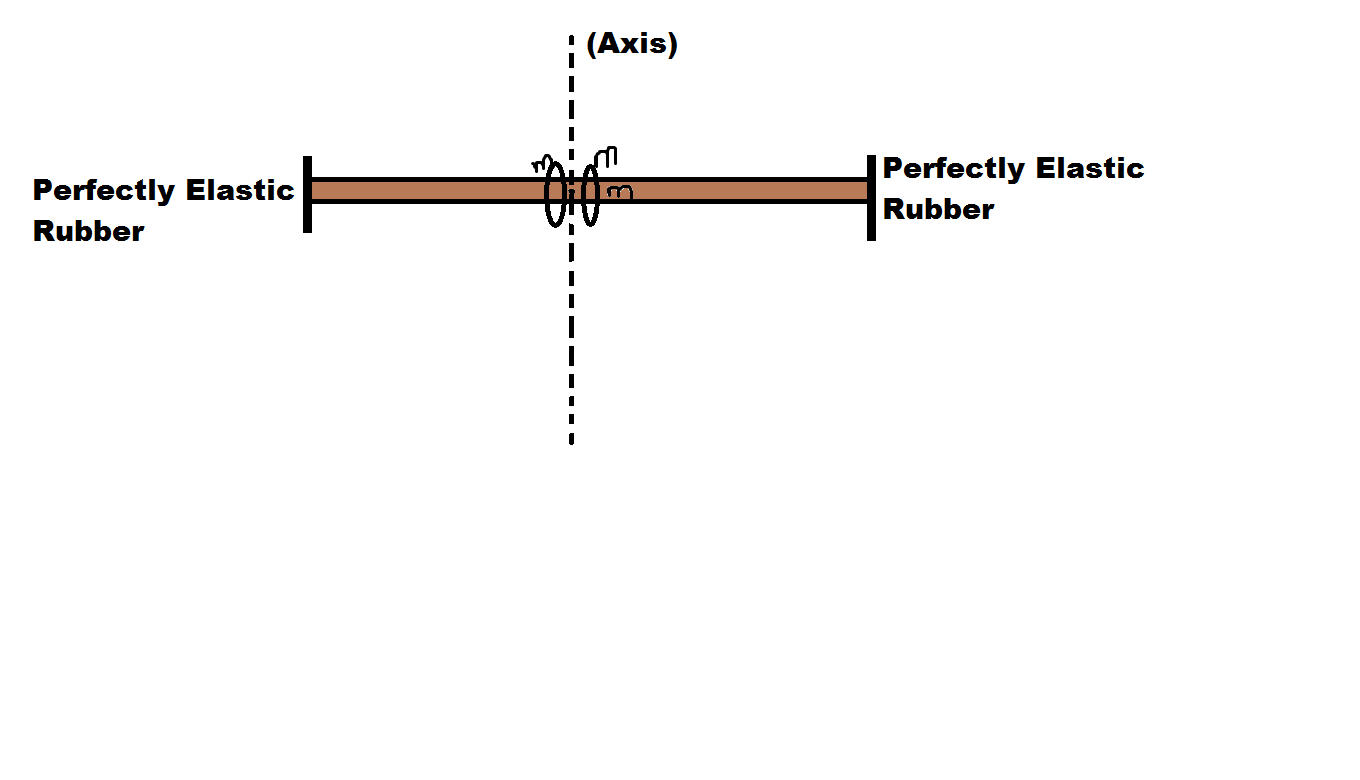My Elasticity Doubt
Hey guys. I had a question on elasticity which looked something like this.

We have small beads of mass say \(m\) and Mass of rod say \(M\). Now we need to find the extension in the rod after the beads collide with the the perfectly elastic rubber. Given that it rotates with angular speed \(\omega\) and
and . [And if you need more variable you can take it. I think the given variables are enough]
No friction is there between the beads.
Now see my solution.
Plan
We have a rotating rod. So we will find out the extension for rotation (Say ) and for the collision say .
So is it that we need to find out .
Now we can find easily as follows.
Lets take a differential portion of the rod as .
Now the mass of the differential mass =
As rod is uniform we have
.
Now We Stress=
Integrating from we get
Now we have the part.
For . Can we say that the force exerted by each mass on the rod is and then
So We can take
But i am confused if i can take the sum or if the beads play any role in extension or not.
PLEASE HELP!
Easy Math Editor
This discussion board is a place to discuss our Daily Challenges and the math and science related to those challenges. Explanations are more than just a solution — they should explain the steps and thinking strategies that you used to obtain the solution. Comments should further the discussion of math and science.
When posting on Brilliant:
*italics*or_italics_**bold**or__bold__paragraph 1
paragraph 2
[example link](https://brilliant.org)> This is a quote# I indented these lines # 4 spaces, and now they show # up as a code block. print "hello world"\(...\)or\[...\]to ensure proper formatting.2 \times 32^{34}a_{i-1}\frac{2}{3}\sqrt{2}\sum_{i=1}^3\sin \theta\boxed{123}Comments
@Steven Chase , @Thomas Jacob , @Aaron Jerry Ninan , @Mark Hennings , @David Mattingly , @Aniket Sanghi , @Prakhar Bindal , @Dipanwita Guhathakurta , @rajdeep brahma
Zuhair.... If we take lengh of the rod to be L then why should we integrate from -L to +L(instead -L/2 to +L/2). I also think the tension in the differential portion also depend on the mass and acceleration of the all small part of the rod to the side of nearer end of the rod . So we have to integrate and find out the total tension contributed to the differential mass as a function of 'distance from axis' and substitute it in Young's equation. I do not think the bead will involve.
Log in to reply
Oh yes sir. Thats typo error because I was typing without any written peice. So take lenght as 2L. Or else I will just edit it sometime. Can you please provide a solution if you didnt did it this way and your issues abput thte tension. Thanks
Otherwise, is the concept right?